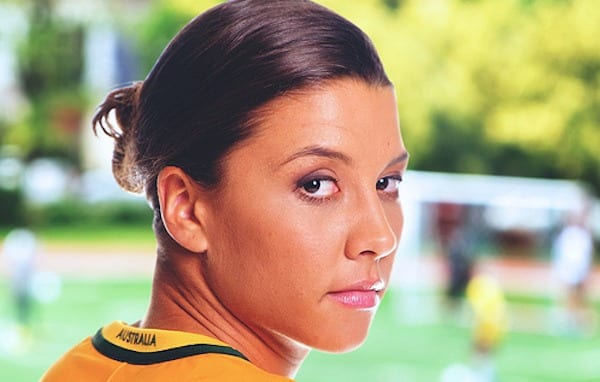Broadcasting the first of three Twenty20 internationals between Australia and New Zealand, Channel Seven successfully reached a peak audience of 1.298 million people tuning into watch the game, a record for women’s cricket. Almost three million viewers tuned in across the full feed.
It was yet another example of the massive public and commercial appeal of women’s sport in Australia, although it’s taken a while for major networks and sponsors to catch on.
And that record viewing night coincided with a massive weekend for women’s sport, that included the historic first grand final of the women’s NRL, and the Opals taking the silver medal at the world basketball championships.
Just last month, more than one million people tuned into watch the Suncorp Super Netball Grand Final, despite the weekend afternoon game time.
And in its second year, the AFLW pulled in some massive crowds in early 2018, with a record 41,975 people arriving to watch a game in Perth — and the massive increase in women’s participation in the sport also potentially reflecting the fact people are watching. The women’s competition has driven more people into the sport in general, as AFLW chief Nicole Livingstone recently told The Age: “At least 30 per cent of our audience haven’t really followed football before. There’s this sense of ‘I want to be a part of it’.”
It’s not just women who are interesting in ‘women’s sport’.
A recent international study from Nielsen Sports found that 84 percent of general sports fans across eight countries including Australia — more than half being male — are interested in women’s sport.
Even better, the study found that women’s sports is perceived to be more “progressive”, more “clean”, more “inspiring” and more “family-oriented” than men’s sport. Respondents also said women’s sport was significantly less “money-driven” than men’s sports.
Surveying 1000 people in eight different markets including the US, UK, France, Italy, Germany, Spain, Australia and New Zealand, the Nielsen Sports data found 66% of the population are interested in at least one women’s sport and that 46% of people said they would watch women’s sports if they were accessible on free TV.
As for those who said they had no interest in women’s sport, the data suggests they could be swayed. Thirty eight per cent said they had never watched but “could be interested” — showing there’s an opportunity for stakeholders to try and better engage those who aren’t currently following women’s sport.
But it also found that interest increases for women’s sport when male and female events are staged at similar times — which may suggest some significant opportunities for the AFLW and other major competitions.
Meanwhile, we’re finally seeing more opportunities for recognition for female athletes. This year 15 female soccer players have been nominated for the inaugural women’s Ballon d’Or award, including Australia’s Sam Kerr (pictured above). The men’s version of the award has been presented since 1956.
Sport Australia CEO Kate Palmer recently told Women’s Agenda the increasing interest in women’s sport is nothing short of revolutionary. But she said that it’s been a long build, and warned that setbacks may occur. “I want all sports with females playing to be resilient around the knock backs,” she said. “The commercial support and broadcast support will be a slow burn but we need to persist because it will happen. The market is ready for this – we know that. But I know from my time with netball that you make ground, and then get pushed back.”
There will be push backs, but we can also look forward to women’s sport getting more competitive, especially as more female athletes turn semi or fully professional in the years to come.
Big thank you to Michelle Redfern who alerted Women’s Agenda to the Nielsen Sports data, and is a huge advocate for women’s sport in Australia.


